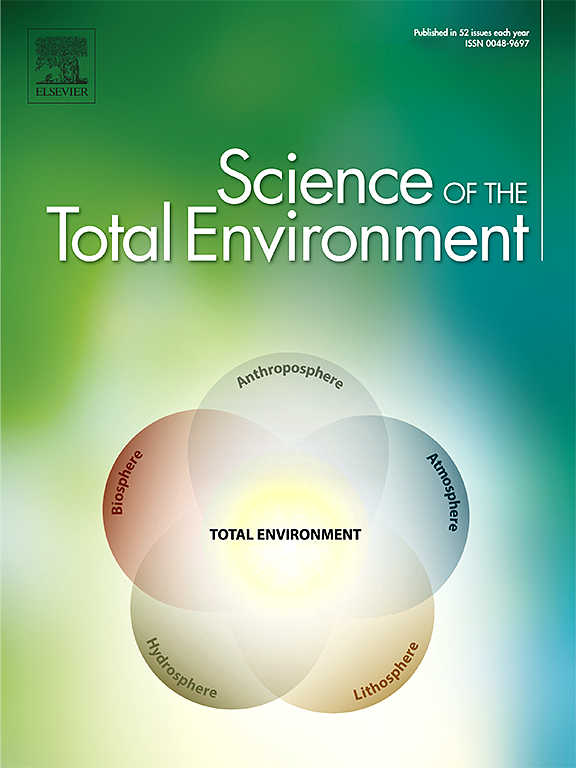Impact of silicon nitride nanoparticles on soil organic carbon dynamics in subtropical evergreen forest ecosystems of China: An incubation study
IF 8.2
1区 环境科学与生态学
Q1 ENVIRONMENTAL SCIENCES
引用次数: 0
Abstract
Ensuring the stability of soil organic carbon (SOC) is vital for effective long-term carbon storage in forest ecosystems. While nanoparticles (NPs) have shown the potential to enhance SOC stability and reduce cumulative carbon mineralization rates (CCMR) in agricultural soils, their effects on forest soils remain largely unexplored. This study addresses this gap through an incubation experiment that evaluated the impact of silicon nitride nanoparticles (Si3N4-NPs) at varying concentrations [control, 0 mg kg−1 (NP0); 50 mg kg−1 (NP1); 100 mg kg−1 (NP2)] on SOC stability, CCMR, enzymatic activities, and microbial diversity across three forest ecosystems in the Dinghushan region of Guangdong, China: coniferous forest (CF), mixed conifer–broadleaf forest (MCBF), and monsoon evergreen broadleaf forest (MEF). The results revealed that Si3N4-NP application at the NP2 concentration significantly reduced CCMR by 40.82 % compared to the control (NP0). Moreover, NP2 substantially decreased the activities of key soil enzymes: β-glucosidase by 13.81 %, N-acetylglucosaminidase by 32.62 %, cellobiohydrolase by 59.12 %, and phenol oxidase by 26.40 %, relative to NP0. The NP2 treatment also enhanced total SOC retention by 24.62 % compared to NP0. Within SOC fractions, NP2 significantly impacted the less labile (C3) and non-labile (C4) fractions, which increased by 46.83 % and 57.84 %, respectively, compared to NP0. Meanwhile, the very labile C (C1) and labile C (C2) fractions showed non-significant changes. Furthermore, the Si3N4-NP applications induced distinct shifts in bacterial (Actinobacteriota) and fungal (Ascomycota) microbiomes, which correlated significantly with CCMR and total SOC. These findings indicate that Si3N4-NPs improve SOC stability and reduce mineralization in forest soils. However, field-scale validation is essential to assess the long-term impacts of Si3N4-NPs on microbial communities and overall ecosystem functioning. This study highlights the significance of NP concentration and forest type in developing effective strategies for SOC management to mitigate climate change.

求助全文
约1分钟内获得全文
求助全文
来源期刊

Science of the Total Environment
环境科学-环境科学
CiteScore
17.60
自引率
10.20%
发文量
8726
审稿时长
2.4 months
期刊介绍:
The Science of the Total Environment is an international journal dedicated to scientific research on the environment and its interaction with humanity. It covers a wide range of disciplines and seeks to publish innovative, hypothesis-driven, and impactful research that explores the entire environment, including the atmosphere, lithosphere, hydrosphere, biosphere, and anthroposphere.
The journal's updated Aims & Scope emphasizes the importance of interdisciplinary environmental research with broad impact. Priority is given to studies that advance fundamental understanding and explore the interconnectedness of multiple environmental spheres. Field studies are preferred, while laboratory experiments must demonstrate significant methodological advancements or mechanistic insights with direct relevance to the environment.
 求助内容:
求助内容: 应助结果提醒方式:
应助结果提醒方式:


